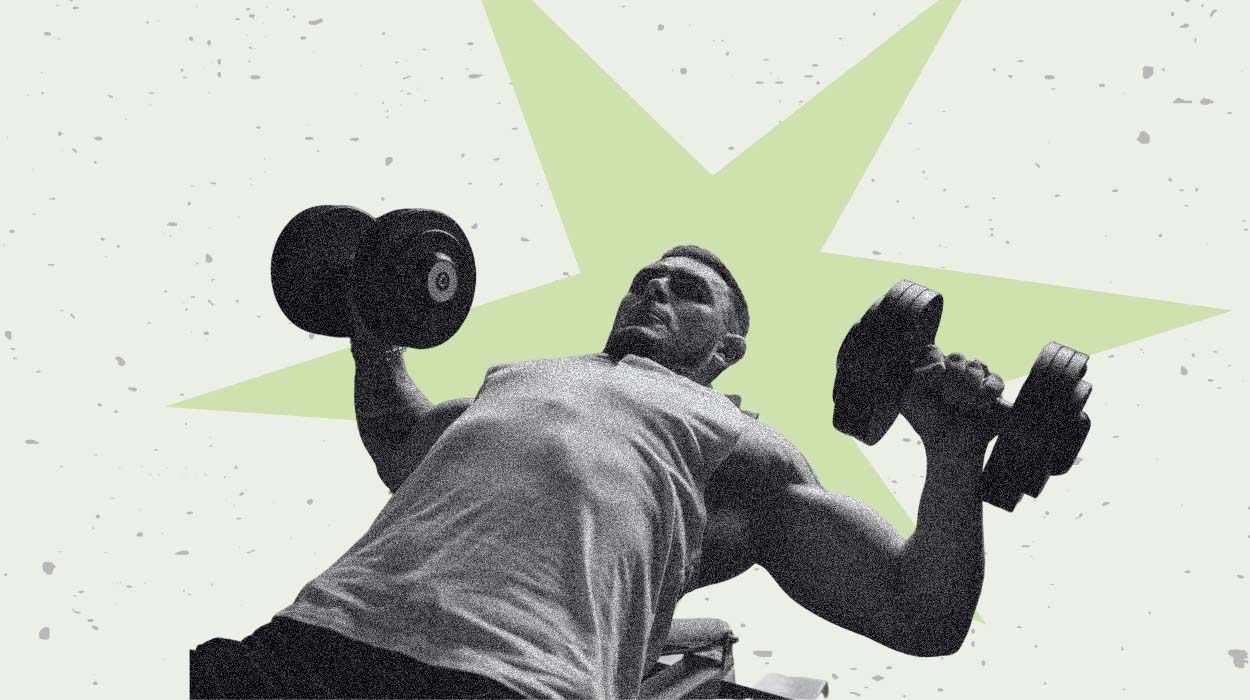
Whether you are looking for the best workout to lose weight, a routine to put on muscle or both, incorporating the best chest workout will help you achieve your goals. The main muscle in the chest is the pectoralis major, which consists of the sternal head and clavicular head muscle fibers. In order to grow these sections, you have to work the muscles from different angles. A built chest is more than just the pecs through and building up the surrounding muscles to increase your shoulder width will complete the desired look.
Chest Workout Routine: 8 Best Chest Exercises
Compound Lifts
Isolation Lifts
8 Best Exercises For Your Chest Workout Routine
Warm Up
A good workout starts with a good warm-up. For this routine, the primary focus is to get blood flowing to the muscles of the chest and upper body. Do each movement 10 times.
- Thoracic extension over a foam roller
- Half kneeling thoracic rotation
- Cat cow
Compound Lifts
Get the most out of your workout by doing compound lifts first. This way you will be able to push the most weight when you are the most energized and ready, rather than tiring yourself out with isolation movements first. Give yourself rest periods of 30-60 seconds between sets.
Barbell Incline Bench Press
This exercise also engages the front deltoids and triceps, making it a compound movement that enhances overall upper body power and aesthetics. Including the Barbell Incline Bench Press in your routine can result in a balanced and sculpted chest, improved upper body strength, and enhanced athletic performance.
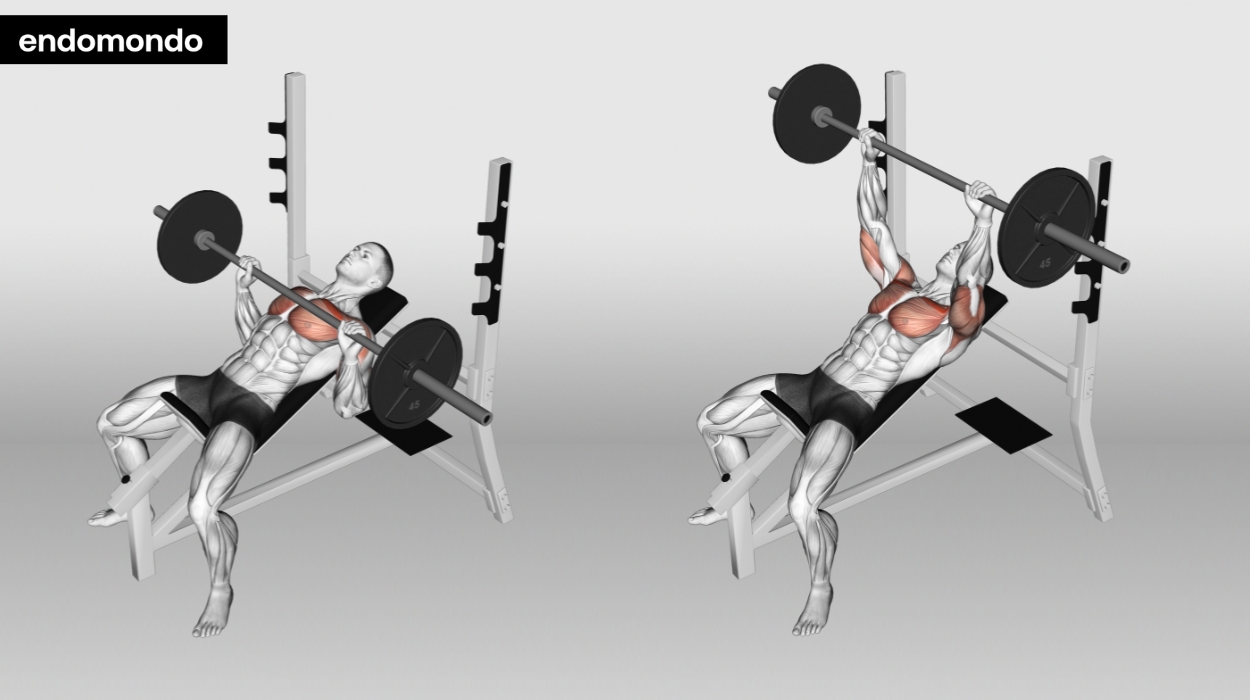
How to do:
- Lie on an incline bench, feet flat, eyes under the bar.
- Grip barbell slightly wider than shoulder-width.
- Unrack, lower to chest, push up, and lockout.
Tips:
- Set the bench at a 30-45 degree incline to target the upper chest effectively while reducing strain on the shoulders. This angle optimizes muscle engagement.
- Maintain a shoulder-width grip on the barbell, ensuring your wrists are aligned with your elbows. This grip allows for balanced muscle activation and reduces the risk of injury.
- Lower the barbell to your upper chest in a controlled manner, and push it upward explosively while maintaining stability and control throughout the entire range of motion. Proper form is key for maximizing results and minimizing the risk of injury.
Optimal Sets and Reps: 3-4 reps of 8-10 reps
Dumbbell Bench Press (Flat Bench)
This exercise offers several benefits, including increased chest muscle mass, improved upper body strength, enhanced stability, and the ability to customize weight loads for individual fitness levels. Incorporating the Dumbbell Bench Press into your chest routine helps you achieve a well-defined, sculpted chest and overall upper body power.
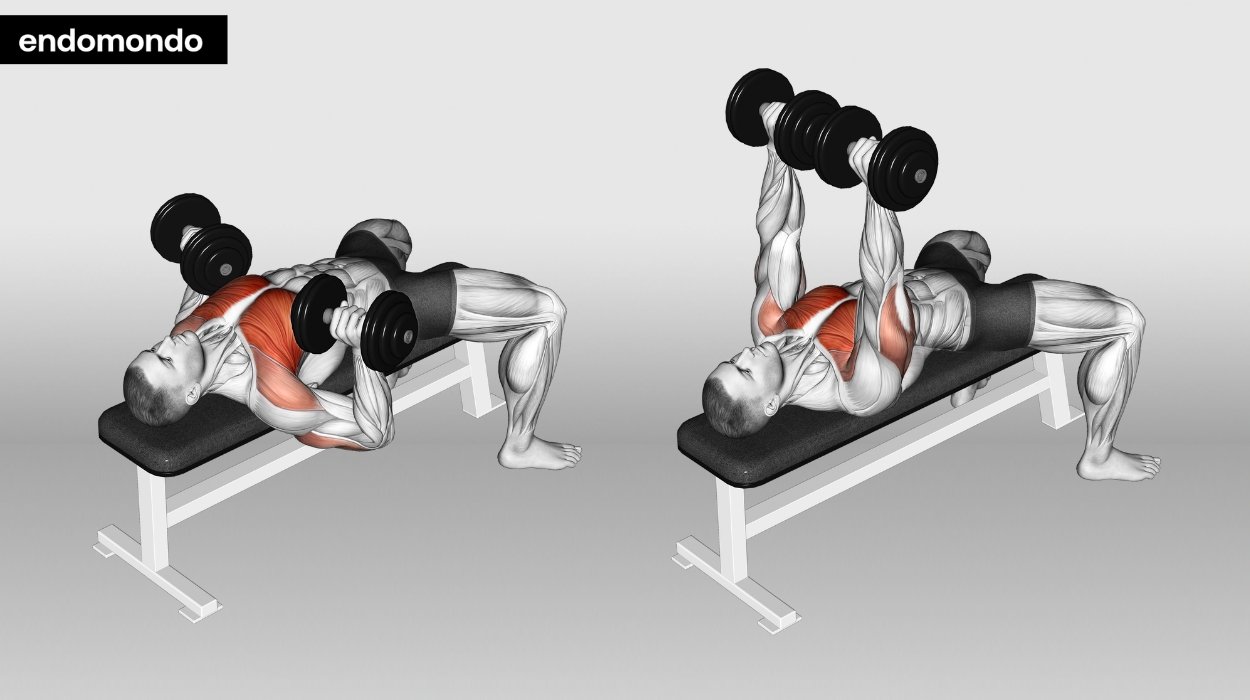
How to do:
- Lie on a flat bench with feet flat and shoulder-width apart.
- Hold dumbbells above the chest, palms facing forward.
- Lower weights to chest, and elbows at 90-degree angles.
- Push weights back up to the starting position
Tips:
- Ensure your back is flat against the bench, and your feet are firmly planted on the ground. Keep your core engaged and your elbows at a 90-degree angle when lowering the dumbbells.
- Lower the dumbbells with control, allowing your elbows to gently touch the bench before pressing them back up. Avoid bouncing or jerking motions to protect your shoulders.
- Inhale as you lower the weights and exhale as you press them up. Proper breathing helps stabilize your core and maintain control during the exercise.
Optimal Sets and Reps: 3-4 sets of 8-10 reps
Decline Barbell Bench Press
This exercise enhances chest development by emphasizing the lower region, contributing to a more balanced and sculpted chest. Additionally, it engages the triceps and shoulders, promoting overall upper body strength. By incorporating the Decline Barbell Bench Press into your chest workout routine, you can achieve a well-defined and proportionate chest while increasing your bench press strength and functional upper body power.
How to do:
- Lie on a decline bench, feet secured, and grip the barbell slightly wider than shoulder-width.
- Lower the barbell to your lower chest.
- Push the barbell back up to the starting position, exhaling as you extend your arms.
Tips:
- Ensure the decline bench is set at an appropriate angle to avoid excessive stress on your shoulders and lower back. It should support your body comfortably.
- Lower the barbell under control to your lower chest while keeping your elbows at a 45-degree angle. Push the weight back up explosively but maintain control to avoid injury.
- When lifting heavy, use a spotter for safety. If unavailable, set safety bars on the squat rack to catch the barbell if needed. Safety should always be a priority.
Optimal Sets and Reps: 3 sets of 8-10 reps
Push-ups
This exercise targets the pectoral muscles, building chest strength and definition. Push-ups also engage the shoulders, triceps, and core muscles, enhancing upper body stability. Incorporating push-ups into your routine helps improve posture, increase overall upper body strength, and can be adapted to various skill levels, making them a versatile and essential component of any chest workout.
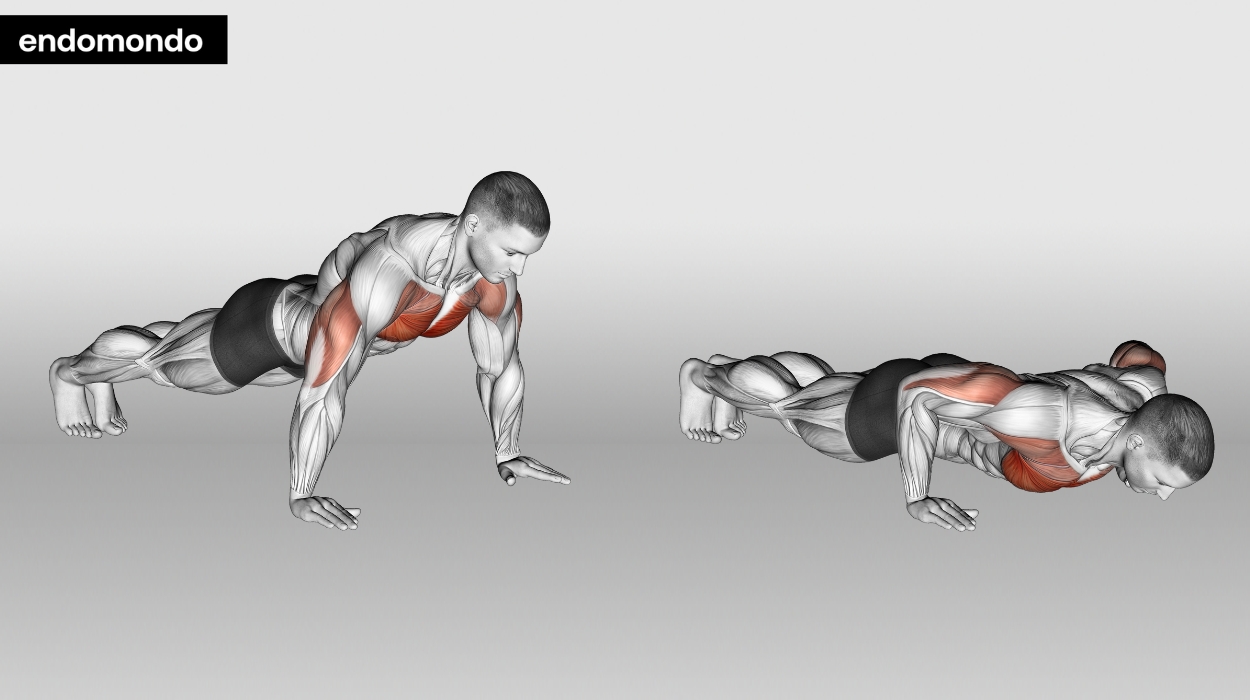
How to do:
- Start in a plank position with hands slightly wider than shoulder-width apart.
- Lower your body, keeping a straight line from head to heels.
- Push back up to the starting position, engaging your chest, triceps, and core.
Tips:
- Keep your body in a straight line from head to heels throughout the push-up. Avoid sagging hips or piking your butt to maintain proper form.
- Position your elbows at a 45-degree angle to your torso rather than flaring them outward. This reduces strain on your shoulders and maximizes chest engagement.
- Lower your chest to within an inch of the ground to ensure a full range of motion. This maximizes the activation of the chest muscles during the push-up.
Optimal Sets and Reps: 3 sets of 10-15 reps
Isolation Lifts
Chest Fly (Machine Version)
This exercise effectively targets the pectoral muscles, helping to build chest strength and definition. The machine version offers added stability, reducing the risk of injury while isolating the chest muscles. Incorporating Chest Fly into your routine can lead to enhanced chest development, improved muscle balance, and a more sculpted upper body, making it an essential component of a comprehensive chest workout routine.
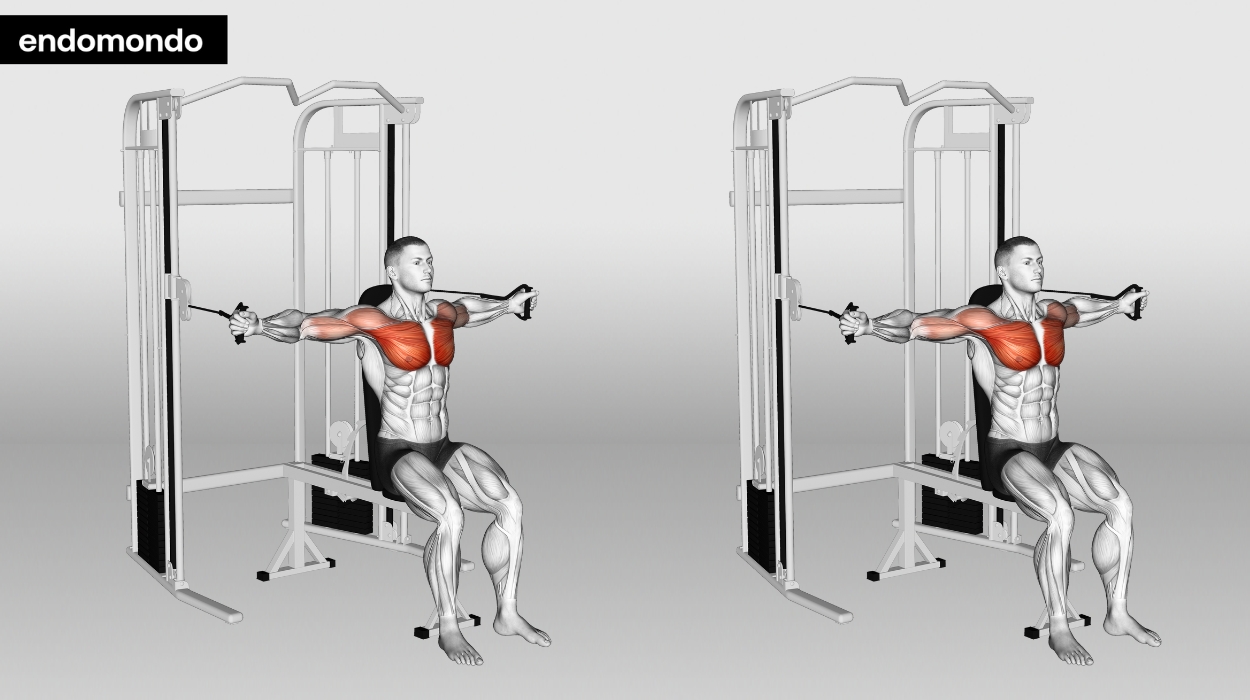
How to do:
- Sit on the chest fly machine with your back flat against the pad.
- Grip the handles with your palms facing inward, and arms slightly bent.
- Exhale and push the handles together, engaging your chest muscles.
- Inhale as you slowly return to the starting position, maintaining control and a slight bend in your elbows.
Tips:
- Ensure your back is firmly against the machine’s bench, and your feet are flat on the ground. Maintain a slight bend in your elbows, and focus on squeezing your chest muscles as you bring the handles together.
- Use a controlled and deliberate motion when opening and closing your arms. Avoid jerking or using momentum, as this can strain your shoulders and reduce the effectiveness of the exercise.
- Aim to achieve a full stretch at the bottom of the movement and a solid contraction at the top. This ensures that you’re targeting the entire chest effectively and maximizing muscle engagement.
Optimal Sets and Reps: 3 sets of 10-12 reps
Dumbbell Flyes (Flat Bench)
This exercise also improves chest muscle definition and can contribute to a fuller and more sculpted chest appearance. Additionally, Dumbbell Flyes promote shoulder stability and flexibility, making them a valuable addition to a well-rounded chest workout routine for improved upper body strength and aesthetics.
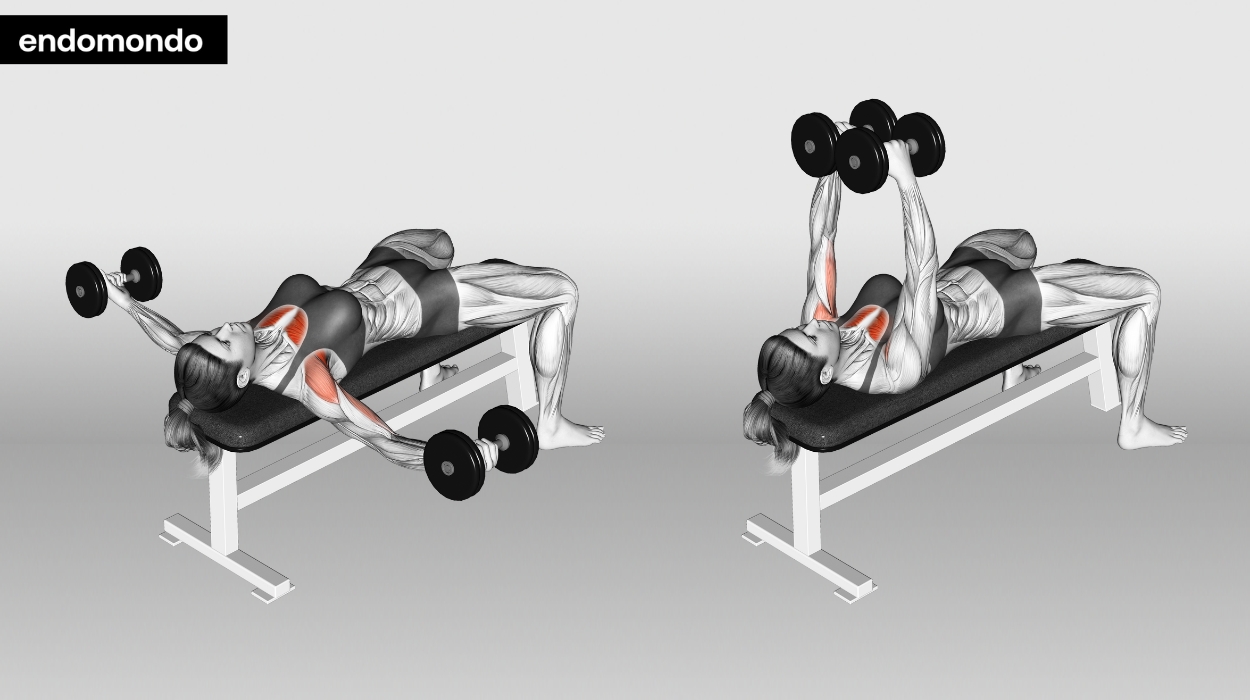
How to do:
- Lie flat on a bench with your feet on the floor, holding dumbbells above your chest.
- Lower the weights with a slight bend in your elbows.
- Extend your arms back to the starting position, squeezing your chest muscles.
Tips:
- Throughout the exercise, concentrate on using your chest muscles to lift the dumbbells rather than your arms. This ensures you’re effectively targeting the chest.
- Keep a slight bend in your elbows to prevent excess strain on the joint and fully engage the chest muscles during the movement.
- Lower the dumbbells slowly and under control to maximize muscle engagement during the eccentric (lowering) phase of the exercise, which can lead to greater muscle growth.
Optimal Sets and Reps: 3 sets of 10-12 reps
Standing Front Dumbbell Raises
While primarily targeting the front deltoids, these raises also engage the upper chest and triceps, enhancing overall upper body strength and aesthetics. Including this exercise in your routine can help you develop well-rounded chest and shoulder muscles, leading to improved upper body symmetry and definition. Additionally, Standing Front Dumbbell Raises can enhance shoulder stability, supporting better posture and reducing the risk of injuries during chest-focused exercises.
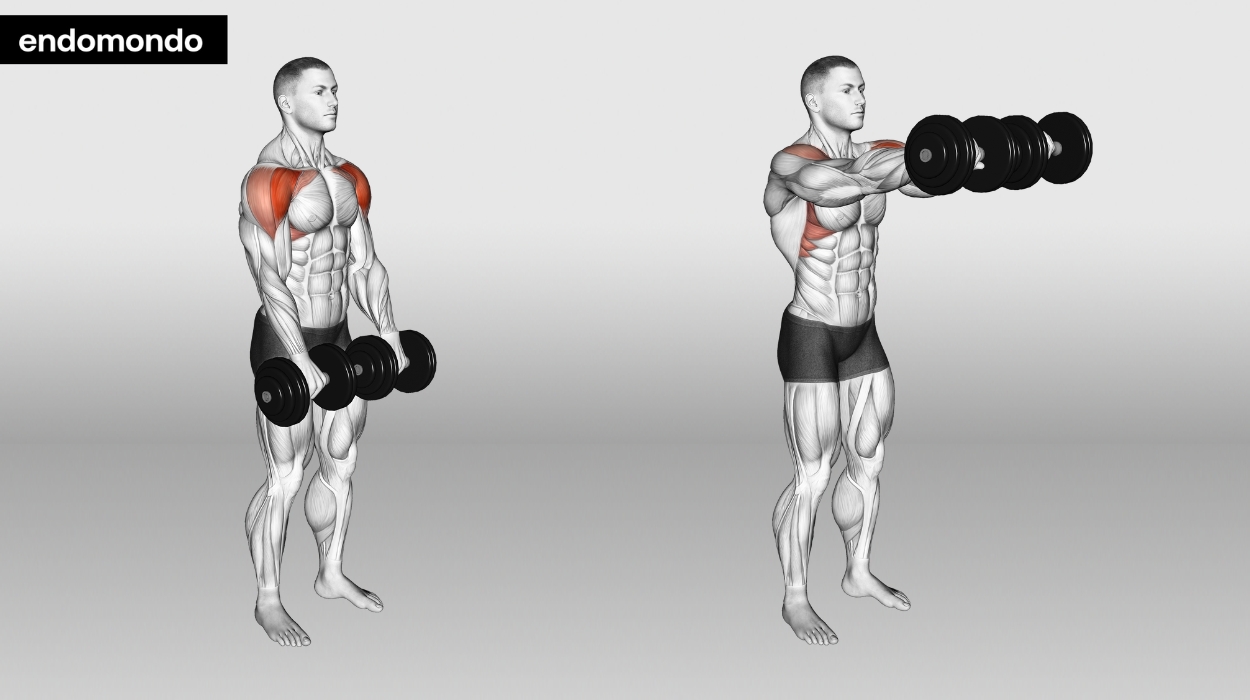
How to do:
- Stand with feet hip-width apart, holding a dumbbell in each hand by your thighs.
- Keep a slight bend in your elbows, palms facing your body.
- Raise both dumbbells in front of you, keeping your arms straight but not locked.
- Lift until shoulder height, then lower back down slowly.
Tips:
- Stand with a neutral spine, and avoid using momentum or swinging to lift the dumbbells. Keep the movement controlled and steady.
- Concentrate on using your shoulder muscles to lift the dumbbells, leading with the shoulders rather than the wrists. This ensures the targeted engagement of the upper chest and shoulder muscles.
- Lower the dumbbells back down to your sides slowly and with control to maximize muscle engagement and prevent strain.
Optimal Sets and Reps: 3 sets of 12-15 reps
Standing Lateral Dumbbell Raises
These raises engage the anterior deltoids while also recruiting the upper chest and upper traps. This exercise enhances shoulder stability and contributes to balanced upper-body development. By incorporating Standing Lateral Dumbbell Raises into your chest routine, you can target multiple muscle groups, leading to improved overall upper body strength, aesthetics, and functional performance.
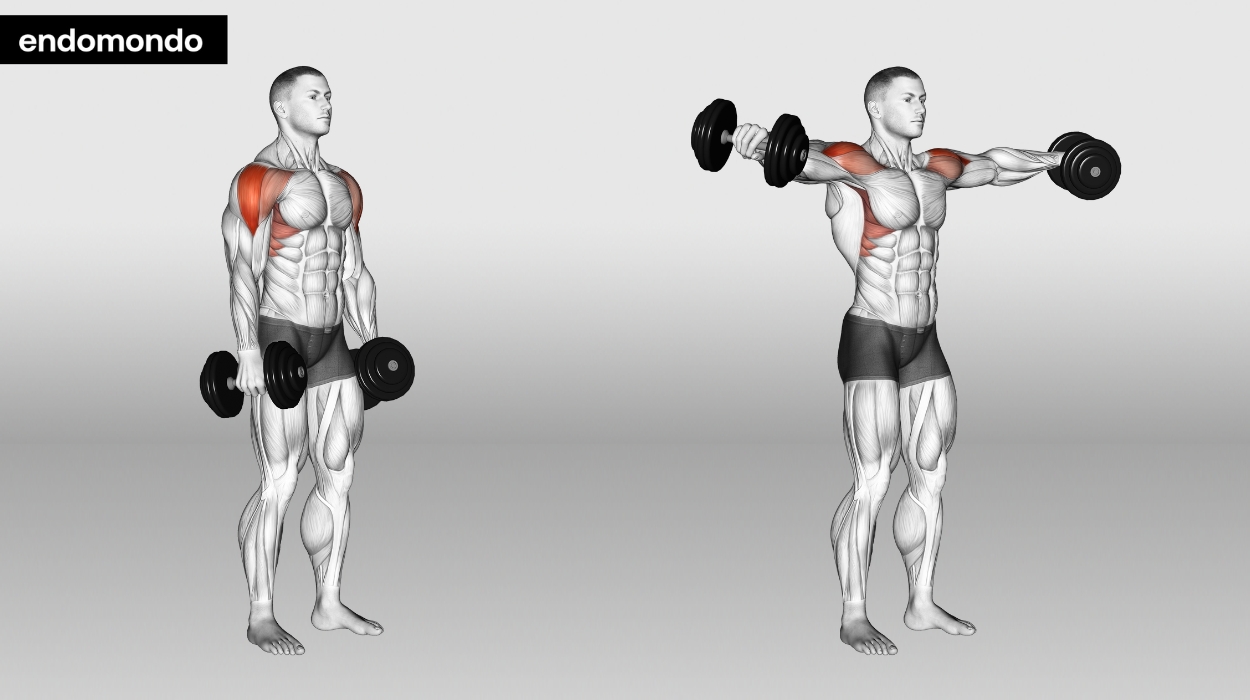
How to do:
- Stand with feet hip-width apart, holding a dumbbell in each hand by your sides.
- Keep a slight bend in your elbows and maintain a neutral spine.
- Raise the dumbbells to shoulder level with a slight bend in your arms.
- Focus on lifting with your shoulders, not your wrists, and keep a controlled motion.
- Lower the dumbbells back down to your sides and repeat.
Tips:
- Stand tall with a neutral spine and engage your core. Avoid leaning forward or backward during the exercise to target the intended muscle groups effectively.
- Lift the dumbbells with a slow and controlled motion, ensuring that your wrists remain in a neutral position. Avoid using momentum to prevent injury and maximize muscle engagement.
- Concentrate on lifting the dumbbells using your shoulder muscles, not your wrists or forearms. This ensures that you target the desired upper body muscles and achieve the best results.
Optimal Sets and Reps: 3 sets of 12-15 reps
Best Chest Workout Routine
| Exercise | Sets x Reps |
| Barbell Incline Bench Press | 3-4 x 8-10 |
| Dumbbell Bench Press (Flat Bench) | 3-4 x 8-10 |
| Decline Barbell Bench Press | 3 x 8-10 |
| Push-ups | 3 x 10-15 |
| Chest Fly (Machine Version) | 3 x 10-12 |
| Dumbbell Flyes (Flat Bench) | 3 x 10-12 |
| Standing Front Dumbbell Raises | 3 x 12-15 |
| Standing Lateral Dumbbell Raises | 3 x 12-15 |
The Major Problems With Your Current Chest Workout
There are many things that people do incorrectly in their workout routines that may be inhibiting their potential for gaining muscle. Here are a few things to keep in mind:
- Not warming up: Your warm-up doesn’t have to take forever. Just five minutes of dynamic stretching can help improve blood flow for muscle activation and help prevent injury.
- Doing your exercises in a random order: Properly structuring your workout is essential for building muscle. Prioritizing compound lifts and ending with isolation exercises is the best way to keep volume high.
- Not cooling down: Incorporating recovery practices is necessary, especially if you want to do two or more workouts in the same week for a particular muscle group. Try these cool-down exercises after your next workout.
- Going into a workout without enough energy: Make sure you know what to eat before a workout to give your body the nutrients it needs. You can also try a pre-workout for another boost of energy. Transparent Labs has done pre-workout reviews and here are some of the best pre-workouts available.
Chest Workout Tips
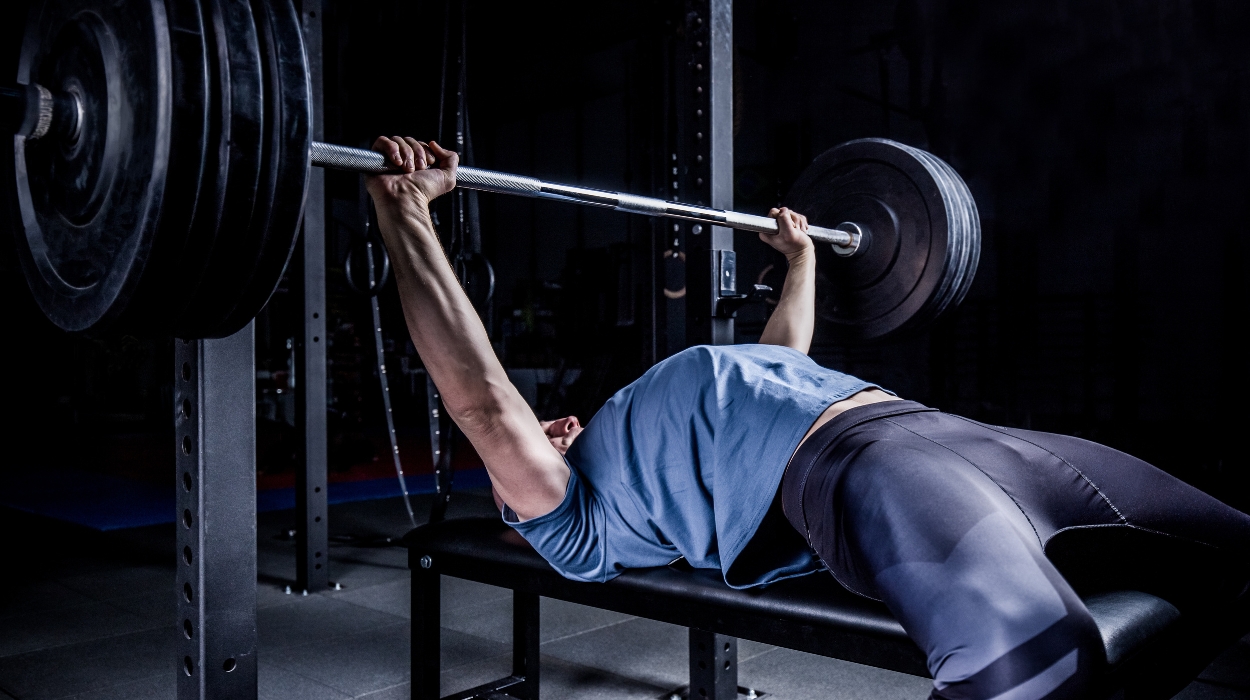
- Start with the correct weight: You have to lift heavy weights to build muscle but be careful not to lift too much and get injured. You should be able to complete at least 6 repetitions and up to 12[1] repetitions. If you can’t do 6 reps, the weight is too heavy. If you feel like you can do more than 12, go heavier.
- Squeeze: Try to tighten or squeeze your chest at the end of the motion when your arms are fully extended out in front of you. Focus on that tightening throughout the movement so your body doesn’t compensate with other muscles.
- Have a workout buddy: Be accountable for one another by scheduling workouts with a friend. They can spot you too so you can push heavy weight safely!
- Track progress: Progressive overload is how we build muscle. You will want to add weight each week gradually to see progress, so make sure to keep track of the weights in a notebook or on your phone.
How To Build A Big Chest
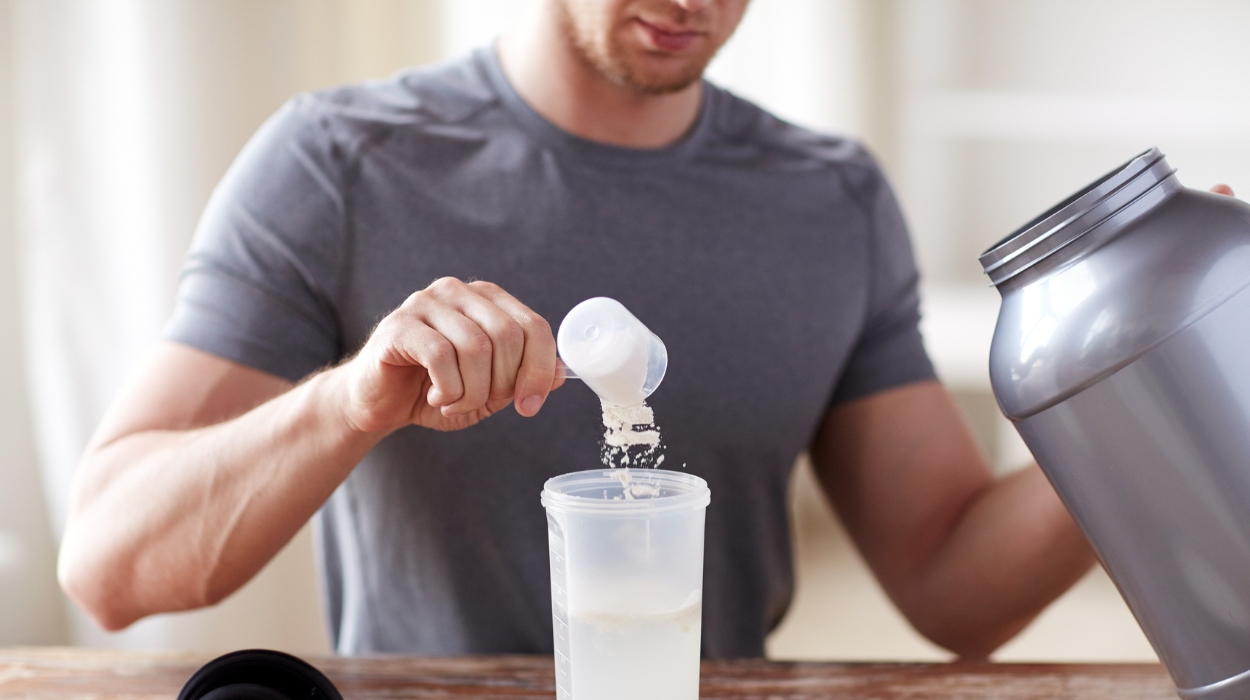
For optimum chest development, you want to be sure that you are doing chest training two to three times per week. In order to increase muscle mass, you need to do anywhere from six to 20 sets[2] of exercises per muscle group per week.
Protein shakes have been found to promote recovery and accelerate muscle development[3] in people who participate in resistance training. At baseline, you need to consume about 0.8 grams of protein for every kilogram body weight[4], and when you are regularly doing resistance training, you should aim to consume an extra 25 kg[5] of protein. Common protein powders are made from whey, casein, egg, soy or pea.
Conclusion
Building chest mass doesn’t have to be complicated. Warm up, do your compound lifts followed by isolation movements, get a good cool down, and drink protein. By implementing this effective chest workout regularly, you will notice definition and strength in just a few weeks.
Frequently Asked Questions
Aim for at least twice per week.
They will challenge the same muscles, but try to stick to one or the other to track your progress.
The upper chest is targeted with any slightly upward horizontal adduction movement such as the incline bench press.
Resources
- Schöenfeld, B.J. (2010). The Mechanisms of Muscle Hypertrophy and Their Application to Resistance Training. PubMed, [online] 24(10), pp.2857–2872. doi:https://doi.org/10.1519/jsc.0b013e3181e840f3.
- Eneko Baz-Valle, Maelán Fontes-Villalba and Santos-Concejero, J. (2021). Total Number of Sets as a Training Volume Quantification Method for Muscle Hypertrophy: A Systematic Review. PubMed, [online] 35(3), pp.870–878. doi:https://doi.org/10.1519/jsc.0000000000002776.
- Pasiakos, S.M., McLellan, T.M. and Lieberman, H.R. (2014). The Effects of Protein Supplements on Muscle Mass, Strength, and Aerobic and Anaerobic Power in Healthy Adults: A Systematic Review. Sports Medicine, [online] 45(1), pp.111–131. doi:https://doi.org/10.1007/s40279-014-0242-2.
- Harvard Health. (2015). How much protein do you need every day? – Harvard Health. [online] Available at: https://www.health.harvard.edu/blog/how-much-protein-do-you-need-every-day-201506188096.
- Daniel, Sidney Abou Sawan, Mazzulla, M., Williamson, E. and Moore, D.R. (2017). Whey Protein Supplementation Enhances Whole Body Protein Metabolism and Performance Recovery after Resistance Exercise: A Double-Blind Crossover Study. Nutrients, [online] 9(7), pp.735–735. doi:https://doi.org/10.3390/nu9070735.




